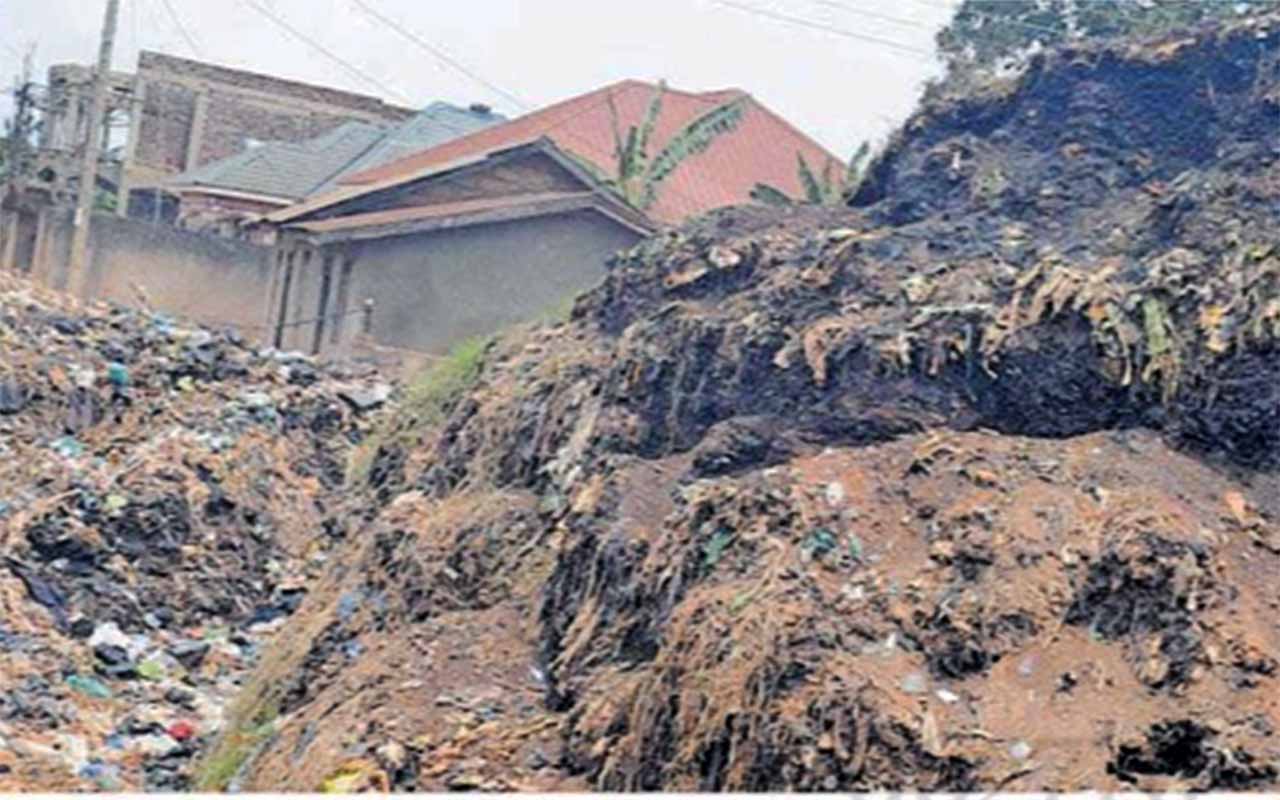Prime
Scientists make discoveries on how to rear edible grasshoppers

Delicacy. A woman sells edible grasshoppers (nsenene) in Katwe, Kampala, recently. Scientists have discovered ways the insect can be reared and made available all year round. PHOTO BY ABUBAKER LUBOWA.
What you need to know:
- Grace Nalongo, a grasshopper catcher in Kampala, says electric light is vital for her business.
- An nsenene dealer at Nakasero market, says customers still buy her grasshoppers even when prices double. A spoonful of grasshoppers now costs about Shs1,000.
Scientists have identified methods aimed at helping farmers to breed Ruspolia Differens Tettigoniidae, commonly known as nsenene in Uganda.
Nsenene is an important source of food in East Africa, but the seasonality of its population dynamics and host plant use are not fully understood by consuming communities.
The insect is consumed by communities in Africa, South America, Australia, as well as selected communities in Europe.
In Uganda, the insect is a delicacy, although its natural habitat is seasonal, a reason scientists are studying its biological habit to enable farmers breed it throughout the year.
This has been done through a collaborative research initiative by scientists from Makerere University Department of Biodiversity and Tourism, College of Agricultural and Environmental Sciences and the University of Eastern Finland.
The research
The scientists have been studying the biological behaviour of the edible insect in Uganda over the last five years under a €380,000 (about Shs1.6b) grant from the University of Eastern Finland.
The lead researcher, Prof Phillip Nyeko, in an overview of the research initiative, notes that his team has discovered that the insect, which used to swam twice a year in the months of May and November, has been affected by the seasonality.
Some of the discoveries include the type of grass species the insects are found of laying eggs on and the type of food they consume.
Scientists are now sensitising farming communities in the country about the breeding process of the insect. Farmers will have to use cages of different sizes to breed the insects and other technologies for providing water and mixed feed meal.

Prof Phillip Nyeko, while giving the background of the existence of the insect, explains that scientists have been conducting research about the biological behaviour of nsenene in days dating back to the 1930s and 1970s but no sufficient information has been made available.
Areas of study
He says his team embarked on establishing if the insect is a pest that can destroy crops, its egg development and caustic physiology, traditional methods of harvesting, processing for commercialisation and food and feed product development.
Dr Robert Nyeko from Gulu University, who carried out studies on the behaviour of the insects at confined fields, explains that scientists for the last five years have been rearing the insects under confined laboratory condition where they are fed on artificial mixture of feed.
He participated in observing their growth behaviour in confined habitat at various places in central Uganda, including the National Crop Resources Research Institute Namulonge, Makerere University Agricultural Research Institute Kabanyolo and Makenke Village near Kabanyolo.
He says his observation is that the insects’ breeding cycle is high during the rainy season due to available green grass, compared to the dry season.
He established that most of the female species lay eggs on grass and sedges and the young ones prefer guinea grass species such as brachiaria mulato grass, while mature ones are fine with local grass species provided it is green.
Types of grass species suitable for its growth both in the laboratory and confined fields include guinea grass species particularly for youth months, brachiaria mulato, Chloris Gayana (Rodhes grass), Congo signal grass, Thactch Tussock guinea grass and elephant grass, among others.
They lay eggs ranging from 50- 500 in their life cycle and it takes 145 days for them to become mature.
The ones reared in the laboratory and confined fields must be under optimum temperatures of between 22 and 27oC.
Dr Geoffrey Malinga from Gulu University, who carried out studies about artificial feed meal the insects can be fed on, explains that it is important to provide the required grass species, although the insects tend to lay more eggs on the guinea grass species.
The insects are reared in glass equipment where the grass species are inserted and feed is mixed into liquid form and soaked in spongy material for them to suck.
The mixture is from simsim cake, millet grains, soybean cake, silver fish mill and water.
Meanwhile from the study carried out by Dr Levtovaara Vilma from Finland for possibilities of scientists manipulating the diet for it to produce Oleic fatty acid, she fed the insects on saturated coconut protein meal, pea protein meal, milk, corn starch and rice flour.
Dr Vilma says it is possible for scientists to incorporate these fatty acids in the nsenene for humans to get it direct by consuming the insects.
Why domesticate nsenene
Food security. In a 2013 publication by the Food and Agriculture Organisation (FAO) titled Edibble Insects Future Prospects of Food and Feed Security, by 2050, the world population is estimated to reach nine billion people, who will need more food to feed on.
“To accommodate this number, current food production will need to almost double yet land is scarce and expanding the area devoted to farming is rarely a viable or sustainable option. Besides, oceans are overfished and climate change and related water shortages could have profound implications for food production.

There are nearly one billion chronically hungry people worldwide and tomorrow, what we eat and how we produce needs to be re-evaluated,” reads the publication in part.
This is part of the reason scientists are researching to devise ways of domesticating edible insects which have always been part of human diets.
Although the majority of edible insects are gathered from forest habitats, innovation in mass-rearing systems has begun in many countries.
Experience in Uganda
Catching the insects. Expanding access to artificial light sources has made it possible to collect grasshoppers at night with relative ease. Professional collectors can be seen using artificial light sources to harvest grasshoppers, although women and children participate by use of street illumination.
This means a loss of electricity supply can play havoc on the income earned from harvesting edible grasshoppers.
In Kampala and other nsenene consuming districts, a kilogramme of edible grasshoppers fetches more money as compared to that of beef.
However the challenge is that the insect is only seasonally available and its shelf life is short.
This has made life difficult for many Ugandan grasshopper catchers and traders.
Grace Nalongo, a grasshopper catcher in Kampala, says electric light is vital for her business. However, the unreliability of the power supply has forced her and several other collectors to rely on alternative sources of power such as fuel generators.
Despite rising prices, fried grasshoppers remain a delicacy in Uganda.
An nsenene dealer at Nakasero market, says customers still buy her grasshoppers even when prices double. A spoonful of grasshoppers now costs about Shs1,000.




